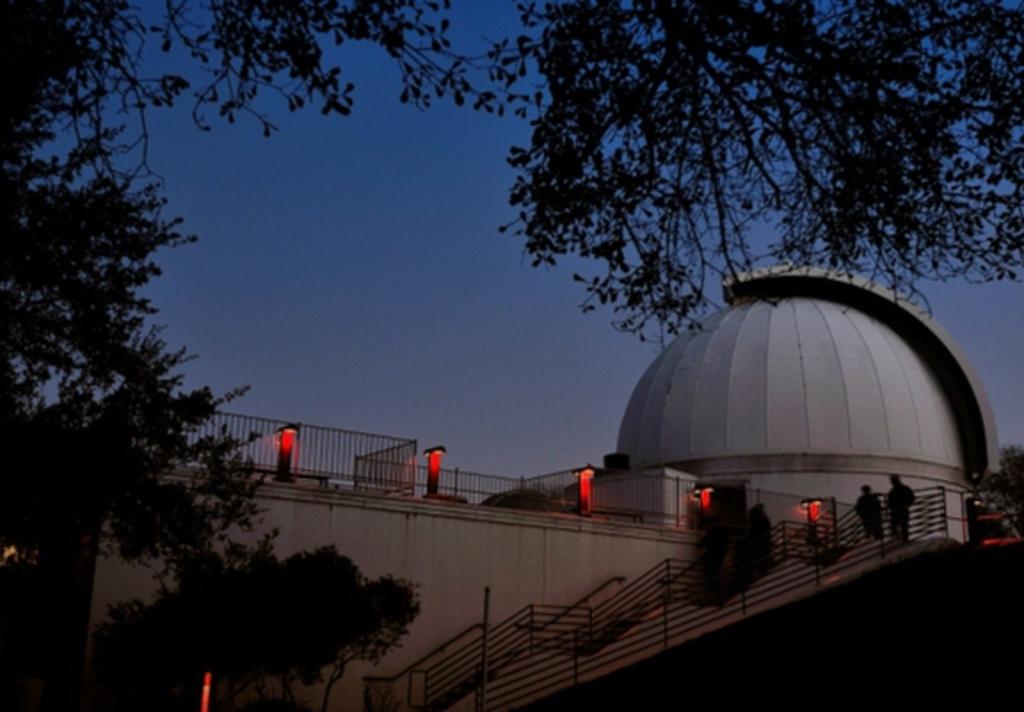
Dedication of the new facility and a celebration of "first light" was held on 2017 November 3. Instrumentation includes CCD cameras for photography and photometry. Today, it remains the largest telescope located between Washington D.C. It houses a state of the art Ritchey-Chretien telescope with a 40 cm primary mirror. From buying tickets to stargazing times, heres what to know to make the most of your visit to. The new and improved Keeble Observatory was constructed in summer 2017, connected to the northeast corner of the Copley Science Center. A locals guide to visiting Houstons George Observatory. CURT1 was decommissioned in August 2016.) This facility was razed in August 2016. In 1988 the telescope drive was completely replaced during renovations, which also included raising the telescope's pier and rebuilding the observing platform.Īdjacent to the Observatory was the 3-meter dish of the 1.4 GHz "Center of the Universe Radio Telescope (CURT1)." On the roof of the Copley Science Center was the dipole array for our second radio telescope, dubbed CURT2 (We decommissioned this telescope as of 2013 June 14. The George Observatory has served galaxy gazers since its opening in 1989, and its new renovations will improve the visitor experience with resurfaced decks, fresh paint and new railings while. In this special episode, George and Will Hardie take inspiration from an 1830s camera. The present Cassegrain telescope was purchased from Tinsley Laboratories with funding assistance from the National Science Foundation in 1966.

The dome was completed and the Hibbard telescope was first used in 1963. Hibbard, a former director of the United States Weather Bureau in Richmond, Virginia. It is located on the College campus, which is approximately 15 miles north of Richmond, Virginia.Ĭonstruction of the Observatory building was initiated to house a 12 inch Newtonian telescope built and donated in 1960 by Foy N. The Observatory is also used for student and faculty research projects. The Observatory is a cornerstone instrument in the College's minor program in astrophysics. Houstonians will see over 90% of the sun covered.The original Keeble Observatory was used by students in the College's astronomy courses and by advanced physics students with an interest in astronomy from 1963 until 2016. The 2024 eclipse will be the first to completely cover the sun for Texas since 1878. Space-lovers can also look forward to two eclipses one in October 2023, and another in Spring 2024. "If you want to try and see a comet and say, ‘I've seen one', this is definitely worth going out and looking for," Sumners said. Astrophotographers have been keeping an eye on the comet as it has crossed the northeastern sky. The comet was closest to the sun on January 12. While most comets are named after the person who discovered it, this one was found last March by a wide-field survey camer a. And even if you don't see the comet at the observatory, you'll be much better prepared to find it," Sumners said. The George Observatory is actually located within Brazos Bend State Park so it’s a very good stargazing spot too Operated by the Houston Museum of Natural Science (a fantastic museum in downtown Houston with a great planetarium, by the way), The George Observatory is open Saturdays year-round for stargazing. "What the observatory offers you is some way to get you real experience star-hopping. However, she said the observatory can help Houstonians prepare for comet watching. Sumners said the George Observatory in Brazos Bend State Park will not have the best view of the comet because the comet will be more visible in northern areas of Texas.

"The comet will be close to Mars on February 10th for the person who has a hard time finding things in the sky, especially because you haven't had much practice – because Houston doesn't show us very much," Sumners said. She said that for those who are inexperienced with star-gazing, the comet might be easiest to find when it is closest to Mars.

Carolyn Sumners is the Vice President for Astronomy at the Houston Museum of Natural Science. The comet is not expected to be visible to the naked eye, but those with a pair of binoculars away from bright city lights can try to spot it in the overnight hours and early morning now through early February.ĭr. It’s still too dim to see without a telescope though.Ī green comet will make its closest approach to Earth in nearly 50,000 years on February 1 and 2. Since then the new long-period comet has brightened substantially and is now sweeping across the northern constellation Corona Borealis in predawn skies. Dan Bartlett Comet C/2022 E3 (ZTF) was discovered by astronomers using the wide-field survey camera at the Zwicky Transient Facility this year in early March.


 0 kommentar(er)
0 kommentar(er)
